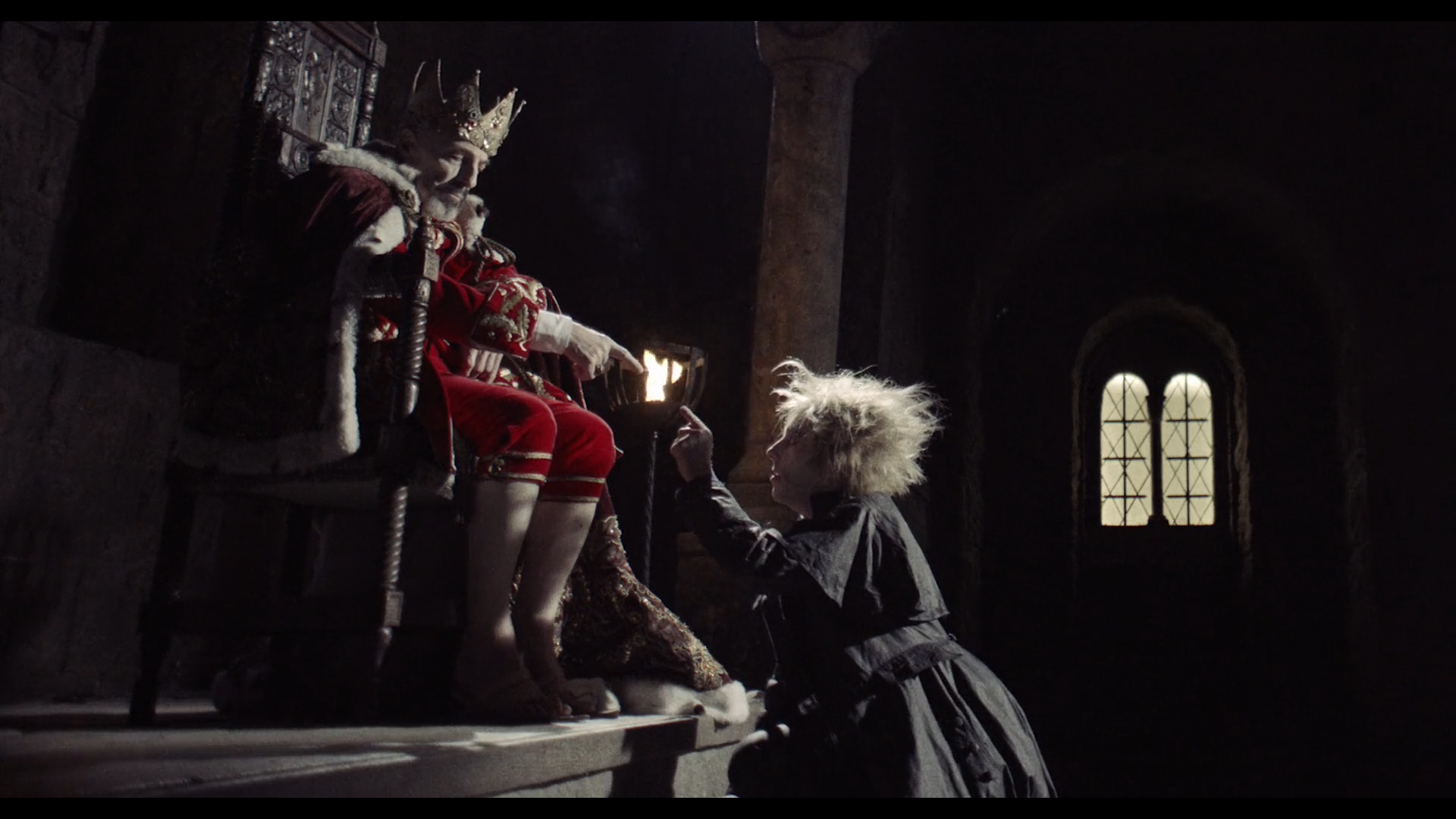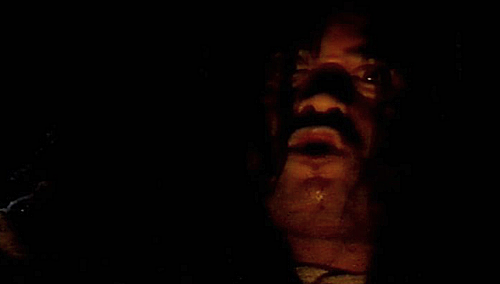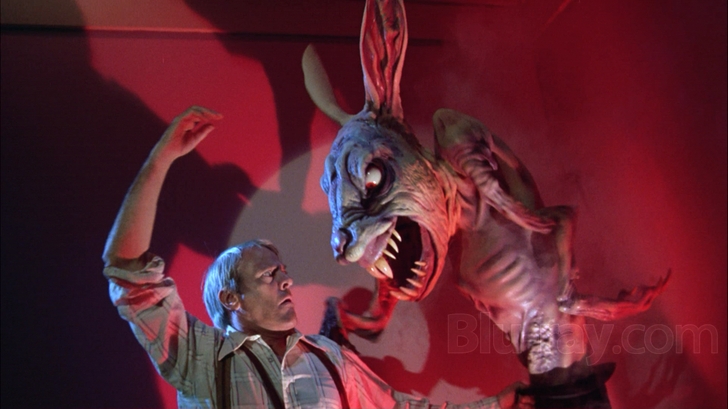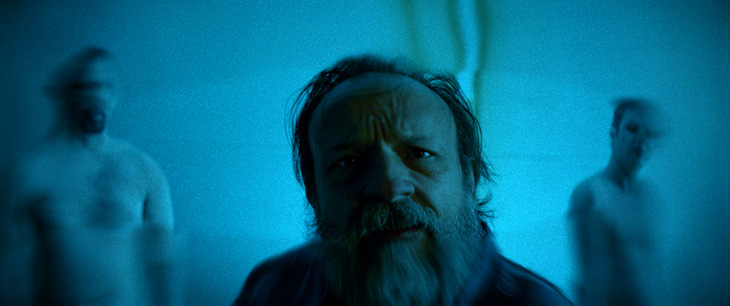This curious compilation of global horror shorts features eight stories each from different directors but produced by Tim League and Ant Timpson, the producers of The ABCs of Death. While there is no linking story on offer here but, unusually for a horror anthology, the stories are thematically linked, focusing on regional myths, monsters and folklore from several countries.
The film mostly features subtitles and foreign dialogue.
The Sinful Women of Höllfall
Opening up this anthology is a Hungarian tale set some time in the past in a remote village where the women live in simple houses and wash their clothes in streams. It follows the story of Kathi, a young lady who seems to have some sort of same-sex relationship with one of the other girls there.
She’s reminded by one of the older ladies in the village that that shit won’t fly in old-timey Hungary and that such sinful behaviour will bring the unwanted attention of the Trud, a monstrous creature feared by the locals.
This story delivers very well on that premise with some effective scares. But, as is often the case with short portmanteau segments, the ending doesn’t really pay off. Still, it’s a decent opener.
Haunted by Al Karisi, the Childbirth Djinn
Bringing things forward to the modern day, this story is set in present day Turkey (which to be fair, doesn’t seem much better than Hungary did in the previous tale except that they have electric light).
Songul is a young woman who is caring for her ailing mother while looking after her newborn baby. It’s not ideal but it gets a whole heap worse when she starts seeing her mother as some sort of harbinger of death in her dreams.
As with the previous tale, this story is unsettling (making me say “oh fuck off” a couple of times during some particularly scary scenes) and it made me quite unhappy (but in a way that as a horror viewer actually made me pretty happy).
Excellent performances from the two main characters really help this tale along as does the stylish way the director uses gore. It’s not done gratuitously but you feel like each bloody scene and deliberate scare has been put there for a reason and to maximum effect.
Unlike the previous tale the ending was on point making this one of the best portmanteau segments we’ve covered.
The Kindler and The Virgin
The previous stories were batshit insane so why shouldn’t this one be? This Polish tale is a bleak tale of cannibalism, sacrifice and rather unwise deals. At first the snowy setting and bass guitar led score brings to mind The Thing but this story is very different to that, and also everything else we’ve ever seen.
It soon abandons the snowy setting and after lots of disorienting cuts and plenty of shots of the lead character looking weary, it eventually gets to some kind of point. The Kindler has been arrested for murder but his motivations are revealed at the end. Well sort of.
Frankly, this is the sort of pretentious, paper-thin tosh that we often see in modern portmanteaus. It doesn’t give you enough information to know what is going on for most of the time and it is neither scary or interesting. Well shot bullshit but bullshit all the same.
The Melon Heads
After three straight foreign tales, this story ditches the subtitles for an American tale (okay, that’s still foreign to us at T8MC but you get the point).
It focuses on a family living in the Midwest and combines a few tired tropes to set up the story. They’ve moved to a new house in an absolutely idyllic woodland setting but their young son, Arnold, picks up on some sort of weird spookiness right away. This is shown with a bit of camera blurring. So far, so 1990s horror.
The story then throws in the whole ‘stay out of the woods’ beardy fella and the is-he-or-is-he-not-imaginary kid thing.
Now to be fair, Arnold carries most of the heavy lifting acting-wise while his parents throw away their chances to ever act in anything good ever again.
Of course the kid decides to go and play with the imaginary kid who turns out to not be imaginary at all. He does have a big melon-shaped head though.
Unfortunately this story really drives down the overall quality of the film so far. The scares don’t land at all, the visuals both in terms of effects and general production are entirely lacking and the acting risible. A real shame.
What Ever Happened to Panagas the Pagan?
This Greek tale is about a goblin. As the devils’ lowliest children, they live in the “Land Below” where they mindlessly worship the blue flame that burns down there. They are able to leave once a year, at Christmas, and so one of them visits a Pagan area in Greece where the men drink and dance and live godless lives.
They spot the goblin early on though and decide to torment him. The line “let’s fuck this goblin up” sets the scene for the rest of the tale. Unfortunately for the goblin, he bleeds wine and so he gets stabbed a lot while the men go mental at his expense.
The tale is a load of bollocks frankly and the scares are tempered somewhat by the production which feels eerily like the 1995 Mortal Kombat movie. The make up, the sketchy CGI, the locations. It’s all weirdly reminiscent.
Anyway, this story fails on pretty much every level apart from one. It does end fairly satisfactorily but that’s about it.
The Palace of Horrors
Colonial India is up next with this black and white segment which is set in 1913. It’s essentially a take on the whole Mummy myth which is to say that a couple of British people find a tomb of sorts and fuck with it despite warnings from the locals.
This might be the shortest tale on offer and it doesn’t really do much. One of the Brits is a prick and so you just know he’s going to get what’s coming to him but you never really see it and in the end this tale fizzles out weakly.
A Nocturnal Breath
Germany’s mythological antagonist here is a drude, a spirit that possesses a person and then leaves the body to spread chaos. Well, it’s 1780 and in the Bavarian Mountains something is afoot.
This tale starts much like the opener with odd glances and the milking of animals before moving into similar territory to the second story. A Nocturnal Breath focuses on a brother and sister working on their farm.
Anni has been possessed by a drude and whenever it leaves her body (which it does as a mouse), she is left lifeless until it returns. Her brother,Xaver, is unable to do anything though and has to watch as the spirit kills their animals and generally acts like a demonic prick.
This is a well thought-out story that nails that grim fairy tale feel that the film is going for. The conclusion to the tale doesn’t answer too many questions but is powerful and ensures that this is one of the film’s best segments.
Cobblers’ Lot
This Hungarian tale pissed me off immediately with its weird low frame-rate and hammy presentation which mixed a sort 1930s silent movie feel with exposition that is presented on scroll-like panels. But it tells the story of Tivadar and Botond, two brothers who make shoes.
Tivador is personally handling the making of shoes for Princess Boglarka and Botond, who is set up as a lazy prick, is jealous because he wants to get in on some of that foot action.
After asking the King for Boglarka’s hand in marriage, he is given a task to see if he is worthy and sent off to retrieve a flower from a lake. Unbeknown to him, this is a test is a test of his will and moral fortitude as the lake is choc-full of saucy women.
This all sets up some brother vs. brother subterfuge which plays out over what feels like a longer time frame than the other tales in this collection. Ultimately, this is a tale that is one of style over substance and any attempts at horror are hammy at best.
And so there you have it. Eight tales of horror that all feel thematically linked, apart from the American one. If that is a real urban legend then they need to try harder over there. Most of them unfortunately veer, predictably, into being pretentious and give themselves the luxury of a weak ending that isn’t earned along the way.
There’s three decent stories here though and generally the production is decent. There are some lush visuals and wonderfully cinematic location shots in evidence and, for the good segments here, some decent visual effects.
But this is a very mixed bag where the highlights aren’t necessarily worth sitting through the almost two-hour running time. But if you’re obsessed with portmanteaus like us and are in the market from some miserable foreign horror, The Field Guide to Evil isn’t a complete failure and if this was the Eurovision of horror, Turkey would be taking home ten points. Or whatever the maximum number is. We don’t watch that shit.












